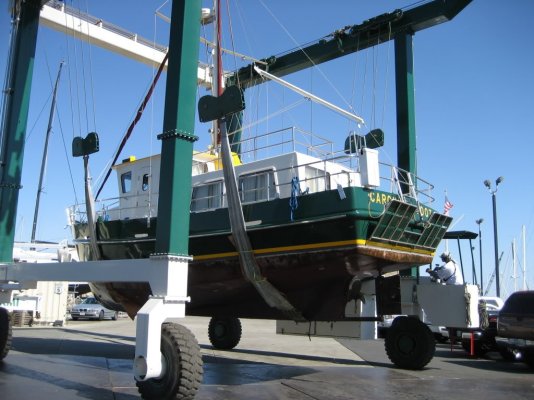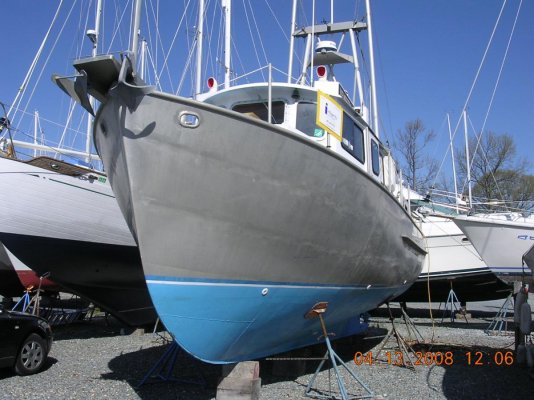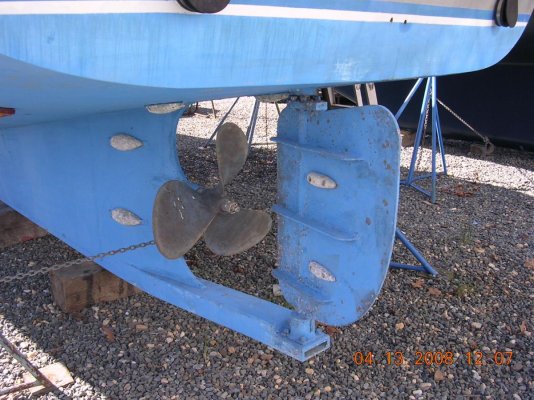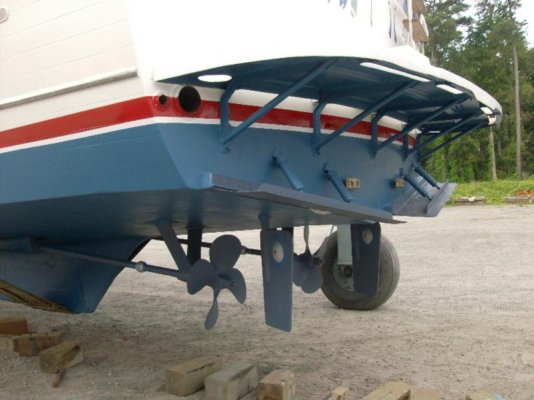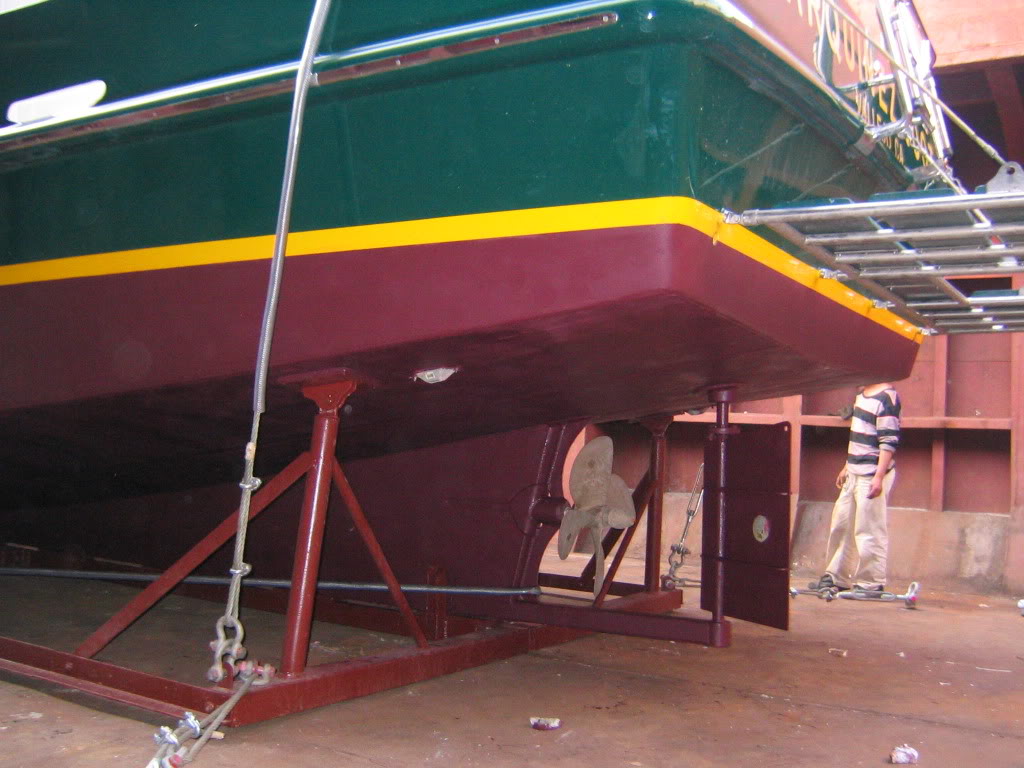There are some that are hard to classify like the GB. I,d say they are semi- disp because of how they perform but a case for planing hull could be made by their fairly straight QBBL and very submerged transom.
The GB hull is semi-planing. Add enough power and you can get the thing to mush along on something of a plane a good five to seven knots above hull speed. But with the weight and the big keel I don't think the boat is large enough to hold an engine or engines powerful enough to fully plane the boat.
American Marine initially chose the semi-planing hull even back when they didn't put enough power in them to take advantage of the speed possibilities because of the stable nature of the ride. Or so they said in all their literature and brochures at the time. No mention was ever made in the 60s and 70s of being able to cruise the boat fast. With one or two FL120s in them, "fast" was not really an option. But AM made much of the hull's stabiity and efficiency. As I've mentioned before, AM never used the term "trawler" in describing and marketing their Grand Banks line of boats. To them, a trawler pulled a trawl net. The Grand Banks slogan was "Dependable Diesel Cruisers" and their literature spoke only of comfort, stability, and efficiency.
Even with one or two FL120s in them, the GBs of the 60s and 70s normally cruised at a wee bit above hull speed. Some of the photos of
Spray, the 1963 prototype for the first GB model, the GB36, show her moving along at a pretty impressive clip. But speed was never anything the company marketed until the early 80s based on all the GB literature I've read over the years.
As customers began wanting more speed out of their GBs starting in the 1980s, AM and then Grand Banks, LLC began installing larger and larger engines to take advantage of the GB hull's ability to semi-plane. So you ended up with GB42s with a couple of 400+ hp engines in them. They can do 15 knots or so, but burn about 25 gph to do it.
We just had our boat hauled this morning for a long-overdue bottom paint job (every time we scheduled one Boeing sent me off to some other part of the world). Looking at the boat out of the water, that hard-chined, flat afterbody that Eric speaks of as being an essential component of a planing hull is very evident. But that massively deep forefoot and large, full-length keel makes it pretty obvious that the only way our hull is every going to achieve anything resembling a full plane is for us to bolt a GE-115 turbofan (115,000 pounds of thrust) to the top of it


